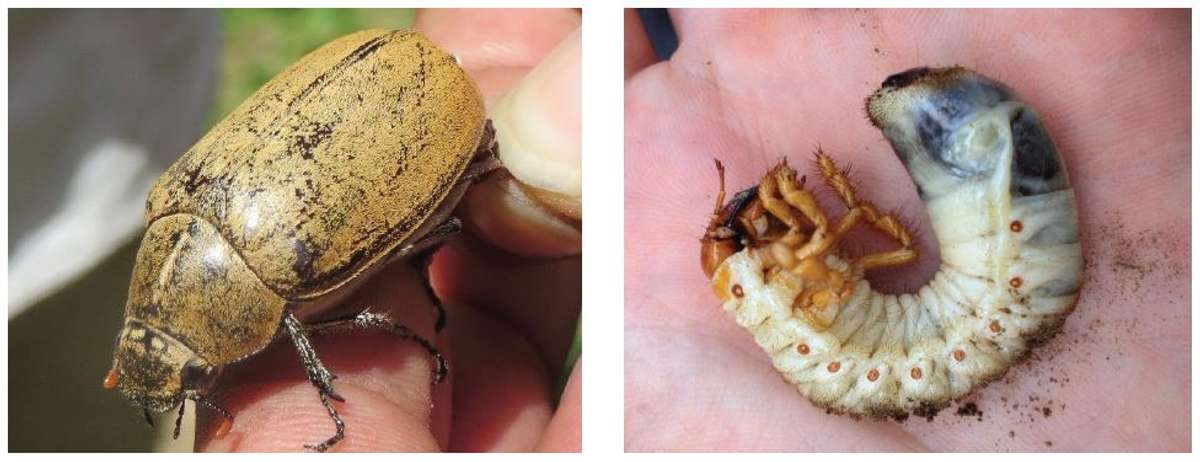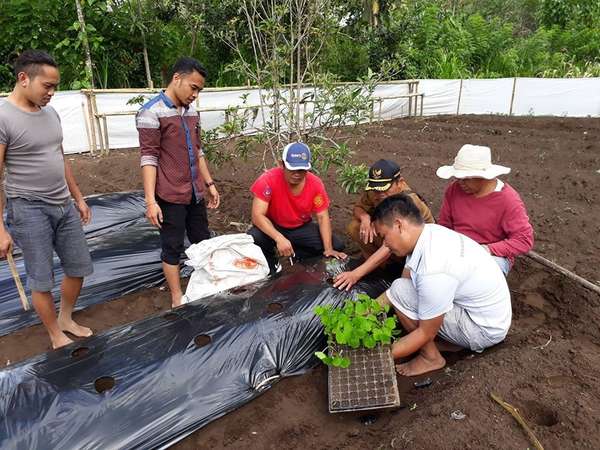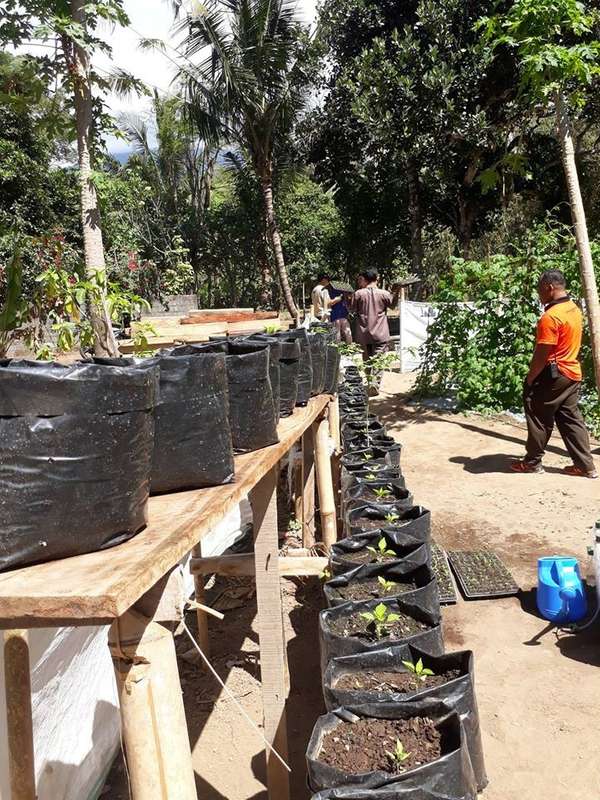This article is from ECHO Asia Note # 42
[Editor’s Note: In response to devastating infestations of the ‘Sugarcane White Grub’, staff at World Relief Indonesia began implementing field trials in 2017 to find appropriate methods for combatting this pest. In November of 2017, ECHO staff traveled to Bali to support these efforts, resulting in an Integrated Pest Management Plan designed together by both teams. Below are some highlights of the practices that have since been implemented and have found success among local farmers.]

Infestation of the Sugarcane White Grub
On the island of Bali we have had recent challenges with the Sugarcane White Grub (Lepidiota stigma) consuming many different crops and frustrating local farmers. In Bali (and Sumatra) we call this pest ‘gayes’, in Javanese it is known as ‘urèt’. In our region, it is a major pest in dryland cropping areas, with the grubs consuming the roots of sugar cane, maize, sorghum, cassava, banana, and other crops. Gayes has always been around, but only in recent years has it become a major pest problem, quickly getting out of control. It has been so bad that some farmers have given up on their fields completely and have abandoned them to grow in other areas. One reason the population has exploded is that back in the olden days people liked to pick and eat the grubs for food, but now the younger generation is not interested.
Our team at World Relief decided to adopt non-chemical control methods to manage the gayes, so we have implemented an Integrated Pest Management approach. We are using a set of different approaches to reduce pest numbers and regain fields that have been abandoned. We are focusing on small plots, using raised beds and intensive vegetable production.
Stages Carried Out by World Relief to Overcome the Problem:
Phase 1: Soil Management
1. Tillage
Every area that has been infested with the pest is cultivated by way of loosening the existing soil, using agricultural equipment or machinery.
2. Hand Picking the Gayes Grub
In the process of tilling the soil each time, we manually remove any grubs that we can see. The results of the collection of larvae can be food for chickens, ducks and other types of livestock that can benefit from consuming the grub.
3. Using a Chicken Tractor
During the process of tilling the soil we release a number of chickens to participate in the feasting. Chickens will eat large larvae and even eggs in the soil. This is done so that in the process of manually retrieving visible larvae we also ensure that the larvae eggs are eaten by chickens in the ground.
4. Solarizing
Tilling the land also exposes the gayes grub to the sun which can kill or weaken any remaining gayes pests.
Phase 2: Soil Management
In the second phase of soil management we mix cow manure into the soil. We learned that the gayes pest likes soil with high amounts of organic matter, so for this reason we wait to have completed the steps in phase 1 before adding manure or compost. We are assuming that the first stage was successful in lowering the numbers of the pest. Even though we know that the gayes pest likes organic matter, we do not want to use synthetic fertilizers, so this is why we have to use an integrated approach.
Cultural Controls

After going through the process of soil management, we conducted several field trials to determine which methods are most appropriate to overcome the problem of the gayes pest. We first used raised beds with plastic mulch, this method is familiar in Indonesia and many farmers use this method in their agriculture already. In addition to reducing the growth of weeds in the soil, our thought is that it is very effective in heating up the soil so that it will kill the grub, or make it retreat from that area. We compared this to plots with no plastic mulch to verify.
We also experimented using vertical garden techniques, using polybags. We used soil from the plots that we had already improved with the steps mentioned above. This is also to anticipate if the plots in the field failed then we could still get agricultural produce from the vertical gardens.
Finally, we decided to focus on transplanting vegetable seedlings instead of direct seeding into the raised beds. This gives us the opportunity to care for the seedlings and give them a good start before there is any risk of encountering the gayes pest in the field. Roots have an opportunity to get strong first before going in the field. We did this for chilli, eggplant, bitter melon, and other vegetables.

Organic Chemical Controls: Making IMO
With farmers we made our own mixtures of IMO (Indigenous Micro-organisms) to spray on plants and also applied to the soil as liquid fertilizer. These methods are low-cost too, and can be made on the farm in large quantities. The materials needed are also easy to get in the village and learning how to make them is also easy. We sprayed our vegetable crops once every week with IMO and organic pesticides made on the farm. These sprays help with strengthening the plant, making it stronger against pest attacks, and protects them from other pests and diseases as well.
Conclusion
Before, many farmers thought that in order to manage such a pest they could only use pesticides and synthetic chemicals. We have used many different natural approaches that have required some new learning, but together they are working, and our farmer partners are producing vegetables again on land that others had given up on. Hopefully, others can have similar success too!
